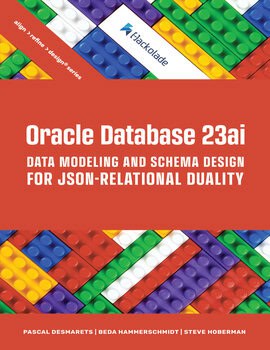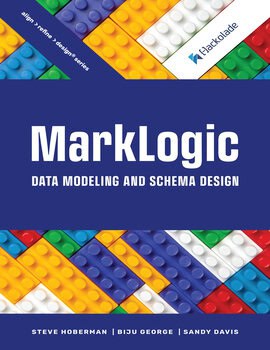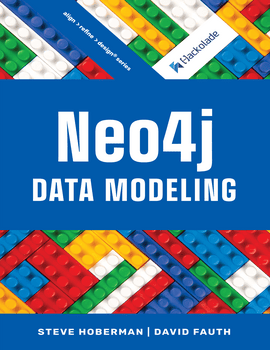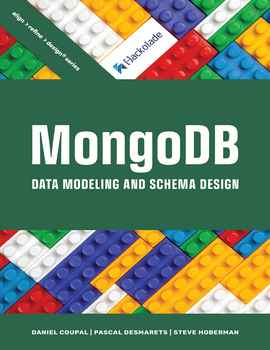Cassandra Data Modeling and Schema Design
The Align > Refine > Design Series, by Steve Hoberman and industry experts
The Align > Refine > Design series covers conceptual, logical, and physical data modeling (schema design and patterns) for leading technologies, combining proven data modeling practices with database-specific features to produce better applications.
Topics
About the Book
About DataStax
About Cassandra
Cassandra use cases
Cassandra architecture
CAP Theorem
Tunable consistency
ACID transactions at scale
Cassandra features
Denormalization
CQL
Data deletion and tombstones
Alter Operations in CQL
Cassandra data types
Collection types
Data modeling and schema design
Audience
About Data Models
Data model explanation
Three model characteristics
Precise
Minimal
Visuals
Three model components
Entities
Relationships
Attributes and keys
Three model levels
Business terms (Align)
Logical (Refine)
Domain-Driven Design
Physical (Design)
Three model perspectives
Relational
Dimensional
Query
Align
Purpose
Our animal shelter
Approach
Step 1: Ask the six strategic questions
Step 2: Identify and define the terms
Step 3: Capture the relationships
Step 4: Determine the visual
Step 5: Review and confirm
Three tips
Three takeaways
Refine
Purpose
Approach
Step 1: Apply elicitation techniques
Analyze workloads
Step 2: Refine queries
Step 3: Capture attributes and relationships
Three tips
Three takeaways
Design
Purpose
Approach
Step 1: Select database(s)
Step 2: Add secret sauce
Cassandra data modeling patterns
Denormalizing
Bucketing
Partition size
Calculating partition size
Time to Live (TTL)
Composite keys
Compaction
Batch operations
Counters
Cassandra data modeling anti-patterns
Lightweight Transactions (LWT)
Tombstones
Materialized views and secondary indexes
Unfrozen collection types
Additional Cassandra features
Cassandra index types
Consistency levels
Vector search and LLMs
Chebotko’s Diagram
Stargate APIs
Spark Cassandra Connector
Data migration methods
Zero Down Migrator (ZDM)
DSBulk
Cassandra Data Migrator
SStable loader
COPY
Benchmarking tools
NoSqlBench
Cassandra-stress
Use case examples
Internet of Things (IoT)
Retail
Logistics
User-item interaction
Three tips
Three takeaways
Read Cassandra Data Modeling and Schema Design if you are a data professional who needs to expand your modeling skills to include Cassandra or a technologist who knows Cassandra but needs to grow your schema design skills.
The book’s introduction and three chapters cover the Align, Refine, and Design approach. We include what the level does in the name by rebranding Conceptual, Logical, and Physical into Align, Refine, and Design.
The introduction covers the three modeling characteristics of precise, minimal, and visual; the three model components of entities, relationships, and attributes (including keys); the three model levels of conceptual (align), logical (refine), and physical (design); and the three modeling perspectives of relational, dimensional, and query. Chapter 1, Align, is about agreeing on the common business vocabulary so everyone is aligned on terminology and general initiative scope. Chapter 2, Refine, is about capturing the business requirements. That is, refining our knowledge of the initiative to focus on what is essential. Chapter 3, Design, is about the technical requirements. That is, designing to accommodate our model’s unique software and hardware needs.
Align, Refine, and Design—that’s the approach followed in this book and reinforced through an animal shelter case study.
If you are interested in learning how to build multiple database solutions, read all the books in the Align > Refine > Design series. Since each book uses the same template, you can quickly skill up on additional database technologies.
About Steve
Steve Hoberman is a world-recognized innovator and thought-leader in the field of data modeling. He has worked as a business intelligence and data management practitioner and trainer since 1990. He is the author of Data Modelers Workbench and Data Modeling Made Simple, the founder of the Design Challenges group and the inventor of the Data Model Scorecard®.
About Betul
Betul O’Reilly is a Solutions Architect at DataStax. She is an experienced Solutions Architect with a strong focus on Cassandra and relational data modeling. Before her role at Datastax, Betul was Principal Cloud Solution Architect at Oracle, focusing on designing and implementing robust Data and AI solutions for EMEA clients and providing detailed architectural guidance. With an impressive track record spanning over 18 years across Telecom, Finance, e-commerce, and IT sectors, Betul has established herself as a dynamic figure in data management, analytics, and data science.
Faculty may request complimentary digital desk copies
Please complete all fields.




